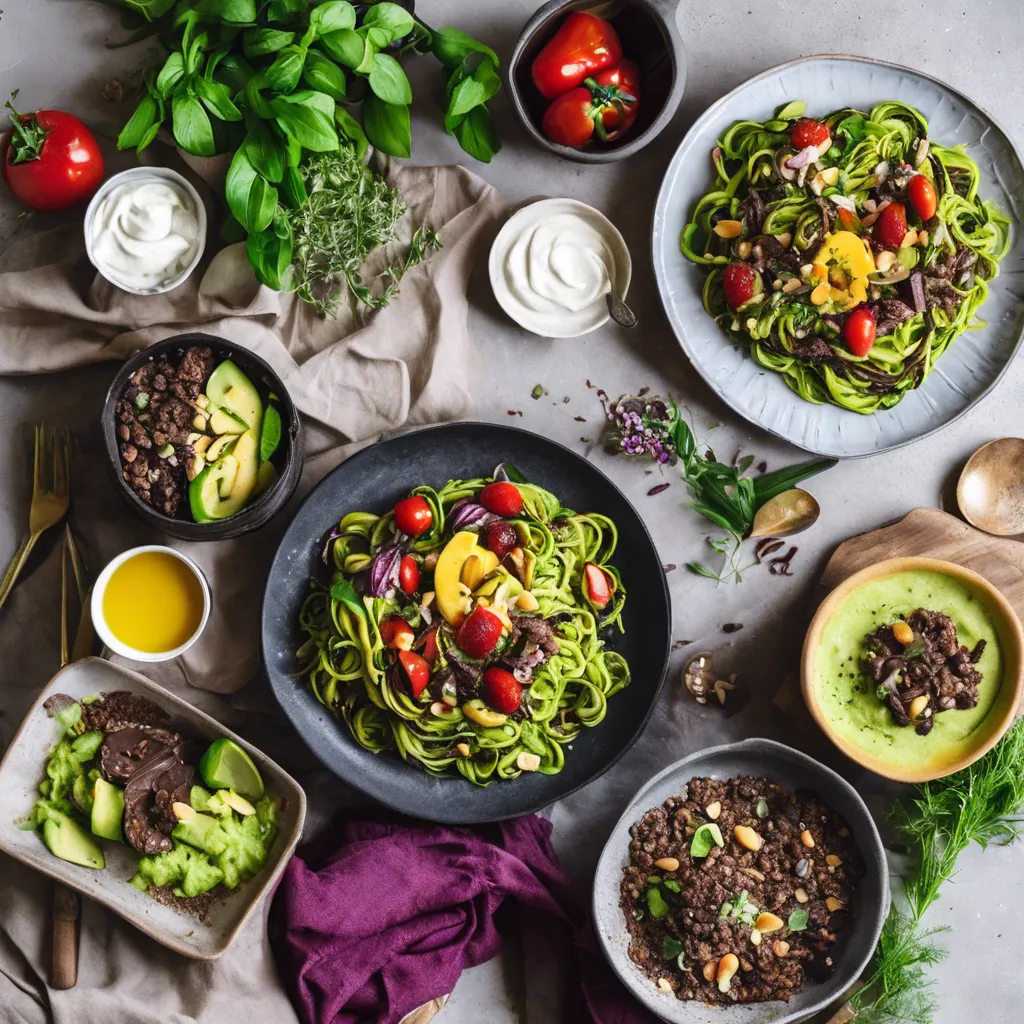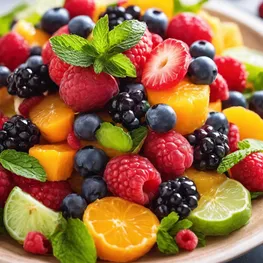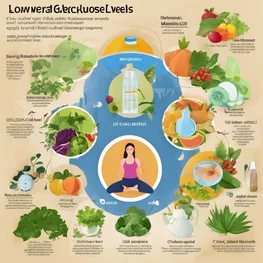Table of contents
- Understanding the Low-Glycemic Index
- Scrumptious and Diabetes-Friendly Recipes
- 10 Tips for Cooking Delicious Low-Glycemic Meals
- Elevating Your Culinary Skills with Presentation and Plating for Gourmet Meals
- Delicious Healthy Alternatives for Decadent Dishes
- Host Unforgettable Low-Glycemic Dinner Parties for Your Guests
Are you tired of sacrificing taste for health? Look no further! In this article, we bring you a collection of gourmet low-glycemic recipes that are not only delicious but also impressively healthy. From mouth-watering desserts to satisfying main courses, these dishes will leave you and your guests asking for more. Say goodbye to boring meals and hello to flavorful delights that won't spike your blood sugar levels. Get ready to impress with every bite!
Understanding the Low-Glycemic Index
The glycemic index is a valuable tool for understanding how different foods impact blood sugar levels. By categorizing foods based on their glycemic index, individuals can make informed choices to manage their blood sugar levels effectively.
- The glycemic index measures how quickly and significantly a particular food raises blood sugar levels after consumption.
- Foods with a high glycemic index (GI) are rapidly digested and absorbed, causing a sharp and quick increase in blood sugar levels.
- Foods with a low glycemic index are digested and absorbed slowly, resulting in a gradual and steady increase in blood sugar levels.
- The glycemic index is measured on a scale from 0 to 100, with pure glucose having a glycemic index of 100.
- High-GI foods include white bread, sugary drinks, and processed snacks, which can lead to spikes in blood sugar levels and insulin resistance.
- Low-GI foods, such as whole grains, legumes, and non-starchy vegetables, are slowly digested, providing sustained energy and better blood sugar control.
- The glycemic index is influenced by factors like the type of carbohydrate, cooking method, ripeness, and presence of other macronutrients like fat and fiber.
- It is important to note that the glycemic index is not the sole determinant of a food's nutritional value. Other factors like nutrient content and portion sizes also play vital roles.
Scrumptious and Diabetes-Friendly Recipes
When it comes to delicious and diabetes-friendly recipes, our collection offers a wide range of gourmet options using low-glycemic ingredients. From savory main courses to decadent desserts, we have something for everyone. Enjoy flavorful dishes like grilled salmon with quinoa and roasted vegetables, or indulge in a guilt-free treat like dark chocolate avocado mousse. With our gourmet recipes, you can satisfy your cravings while keeping your blood sugar levels in check. Discover a world of scrumptious and diabetes-friendly meals that are both nourishing and delightful.
10 Tips for Cooking Delicious Low-Glycemic Meals
Do you want to enhance the flavors of your low-glycemic dishes? Look no further! Here are 10 tips that will help you cook delicious meals while keeping your blood sugar levels in check:
-
1. Use herbs and spices
Experiment with different herbs and spices to add depth and flavor to your dishes. Common options include basil, oregano, cinnamon, turmeric, and paprika.
-
2. Opt for natural sweeteners
Instead of using refined sugars, try natural sweeteners like stevia, honey, or maple syrup. They can provide a delightful sweetness without causing a rapid spike in blood sugar.
-
3. Include healthy fats
Incorporate sources of healthy fats such as avocado, olive oil, nuts, and seeds. These fats not only enhance flavors but also contribute to a feeling of satisfaction and fullness.
-
4. Experiment with citrus flavors
Citrus fruits like lemon, lime, and orange can add a refreshing tang to your low-glycemic dishes. Squeeze some juice or zest over salads, vegetables, or grilled meats.
-
5. Roasting and grilling
Roasting and grilling vegetables and proteins can bring out their natural flavors and create a delicious caramelized exterior. It's a healthy cooking technique that enhances taste without adding excessive calories.
-
6. Add umami-rich ingredients
Umami is the savory taste often associated with meaty or earthy flavors. Boost umami in your dishes by adding ingredients like tomatoes, mushrooms, soy sauce, miso, or nutritional yeast.
-
7. Don't forget about garlic and onions
Garlic and onions are staple ingredients that can transform any dish. They provide depth and complexity to low-glycemic meals and enhance their overall taste.
-
8. Balance flavors with acidity
Acidic ingredients like vinegar or citrus juices can balance the flavors in your dishes and brighten up the taste. Use them wisely to add a tangy touch.
-
9. Experiment with different cooking methods
Try different cooking methods such as sautéing, steaming, stir-frying, or even slow cooking. Each method adds a unique dimension to the flavors of your low-glycemic dishes.
-
10. Mix and match ingredients
Don't be afraid to mix and match ingredients to create exciting flavor combinations. Be adventurous and try new combinations of vegetables, proteins, and spices to keep your meals delicious and interesting.
Elevating Your Culinary Skills with Presentation and Plating for Gourmet Meals
The importance of presentation in making low-glycemic meals feel gourmet cannot be underestimated. It is not just about the taste and nutritional value, but also about the overall dining experience. So, let's explore the significance of presentation in making low-glycemic meals feel gourmet.
-
Visual Appeal
Presentation plays a crucial role in enhancing the visual appeal of a dish. By carefully arranging and plating low-glycemic ingredients, you can create an enticing and appetizing meal that immediately captures attention. The use of vibrant colors, different textures, and visually pleasing arrangements can make even the simplest low-glycemic dish look gourmet.
-
Perception of Quality
The way a meal is presented greatly impacts our perception of its quality. When low-glycemic ingredients are thoughtfully plated, it gives the impression that a lot of effort has been put into preparing the dish. This perception of quality elevates the dining experience and makes the meal feel more gourmet, even if it is made with simple, healthy ingredients.
-
Enhancing Taste Experience
Presentation can also enhance the taste experience of low-glycemic meals. The visual arrangement of ingredients can influence our perception of flavors. By carefully plating different components of the meal, you can create a balance of flavors and textures that not only pleases the palate but also makes the meal feel more indulgent and luxurious.
-
Creating a Memorable Experience
Lastly, presentation helps create a memorable dining experience. When we are served a well-arranged and beautifully presented low-glycemic meal, it leaves a lasting impression on our minds. It makes us feel special and appreciated, enhancing the overall enjoyment of the meal and making it feel like a gourmet experience.
Delicious Healthy Alternatives for Decadent Dishes
Exploring alternative ingredients is a great way to create healthier versions of indulgent recipes. For example, instead of using all-purpose flour, you can use whole wheat flour or almond flour for added fiber and nutrients. Swap out regular sugar for natural sweeteners like honey or maple syrup. Replace butter with healthier fats like avocado or coconut oil. For cream-based recipes, you can use Greek yogurt or coconut milk for a lighter option. Finally, try incorporating more vegetables and fruits into your dishes to add flavor, texture, and nutritional value. With these simple swaps, you can enjoy decadent dishes guilt-free.
Host Unforgettable Low-Glycemic Dinner Parties for Your Guests
Hosting dinner parties that feature gourmet low-glycemic dishes can be a memorable experience for your guests. Start by planning a diverse menu that includes a variety of low-glycemic ingredients such as lean proteins, fresh vegetables, and whole grains. Experiment with different flavors and textures to create delicious and satisfying dishes. Consider using low-glycemic sweeteners like stevia or monk fruit in your desserts. Pay attention to portion sizes and encourage your guests to savor each bite. Finally, create an inviting atmosphere with stylish table settings, beautiful centerpieces, and soft lighting to enhance the dining experience.
In conclusion, these gourmet low-glycemic recipes provide an excellent way to enjoy delicious and impressive meals without compromising health. From mouth-watering desserts to savory dishes, there is a wide variety of options that cater to different taste preferences. By following these recipes, individuals can incorporate more balanced meals into their diet, while still indulging in culinary delights. Whether it's for personal enjoyment or impressing guests at a special gathering, these low-glycemic delights are sure to leave a lasting impression. So go ahead and explore the world of gourmet cooking with these recipes and discover how easy it is to create healthy, flavorful meals.
Frequently asked questions related to gourmet low glycemic delights recipes
What does low-glycemic mean?
Low-glycemic refers to a type of diet that focuses on consuming foods with a low glycemic index. The glycemic index measures how quickly certain foods raise blood sugar levels. A low-glycemic diet is believed to have various health benefits, including better blood sugar control and weight management.
Are there any restrictions when cooking low-glycemic gourmet dishes?
When cooking low-glycemic gourmet dishes, it's important to focus on using ingredients with a low glycemic index. This means avoiding refined carbohydrates like white bread, pasta, and sugary desserts. Instead, opt for whole grain alternatives, such as quinoa or brown rice, and incorporate plenty of fresh, non-starchy vegetables and lean proteins into your dishes.
Can low-glycemic gourmet dishes be flavorful?
Absolutely! Low-glycemic gourmet dishes can be packed with flavor. By utilizing herbs, spices, and healthy fats like olive oil or avocado, you can enhance the taste of your dishes without compromising on health. Additionally, incorporating ingredients such as citrus fruits, garlic, and onions can add depth and complexity to your low-glycemic gourmet recipes.
What are some examples of low-glycemic gourmet dishes?
There are plenty of options for low-glycemic gourmet dishes. Some examples include roasted salmon with quinoa and roasted vegetables, grilled chicken with a side of mixed greens and balsamic vinaigrette, and vegetarian stir-fry with tofu and brown rice. These dishes showcase the combination of delicious flavors and low-glycemic ingredients.
Can low-glycemic gourmet recipes be suitable for special dietary needs?
Yes, low-glycemic gourmet recipes can be suitable for various special dietary needs. By focusing on whole, unprocessed foods, low-glycemic recipes often align with gluten-free, dairy-free, and plant-based diets. However, it's always important to check individual dietary restrictions and consult with a healthcare professional if necessary.
Why is low-glycemic important in a gourmet recipe?
Low-glycemic is important in a gourmet recipe because it allows for the creation of delicious meals that are also beneficial for overall health. By using ingredients with a low glycemic index, such as whole grains, legumes, and fresh fruits and vegetables, gourmet recipes can be enjoyed without causing a rapid rise in blood sugar levels.







